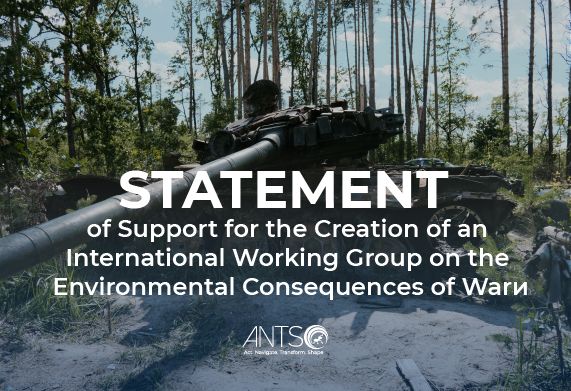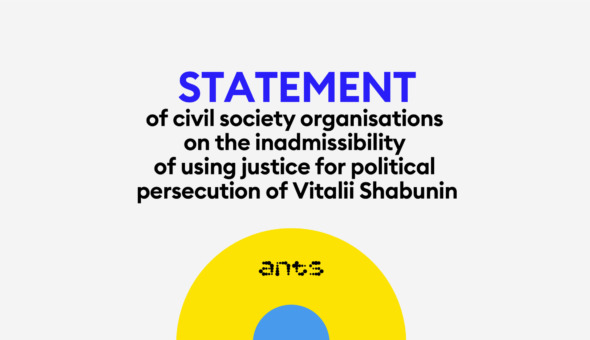
The NGO “ANTS” the National Interests Advocacy Network fully welcomes the establishment of the International Working Group on the Environmental Effects of War and expresses its full support for its activities. We are ready to facilitate the work of this group within the limits of our resources and capabilities.
Punishing russia for the damage caused to the environment is one of the areas in which the NGO the National Interests Advocacy Network actively and persistently works. The question of “How to bring russia to justice for crimes against the environment and compel compensation for damages” is one of the priorities of our organization.
After studying the topic for a long time, expert consultations and open discussions with the participation of specialists from the Ministry of Environment, the Prosecutor General’s Office, the State Environmental Inspectorate of Ukraine, and the National Academy of Sciences gave our specialists the opportunity to develop a number of proposals for legislators and the Government of Ukraine. Namely:
Verkhovna Rada of Ukraine:
- To adopt in general draft law No. 3091 on state environmental control, which, in particular, will significantly strengthen the work of the State Environmental Inspection in recording environmental crimes of the russian federation.
- Include the definition of “damage to the environment” in the basic environmental law on environmental protection. Currently, our laws do not define what “damage to the environment” is, which makes it impossible to have an adequate dialogue with international organizations on the issue of compensation for damages, specifically environmental damage.
- Improve the wording of Article 441 of the Criminal Code (“ecocide”) to clearly define which actions fall under this article. In particular, define what “mass destruction of animal and plant life” and “ecological disaster” are. Define what “long-term and large-scale damage to the environment” is. The work on finding a better wording is already being conducted by a specialized working group under the Ministry of Environment, but it is necessary to ensure the further adoption of the specified changes.
Although the changes to the Criminal Code of Ukraine do not have retroactive effect, for example, those responsible for undermining the dam of the Kakhovka HPP will be responsible according to the legislation in force at that time. But, unfortunately, this is not the last environmental crime committed by the Russians, and the chances of bringing them to strict responsibility should be increased. Urgent!
To date, not a single violator has been brought to justice under Article 441 of the Criminal Code of Ukraine. That is, the specified legal norm does not work.
Cabinet of Ministers of Ukraine:
- Implement international methods of calculating damage to the environment. The methods by which the Ministry of Environment currently calculates damages are not for damage to the environment but for damage to the health of citizens due to the deterioration of the environment. Accordingly, these compensations should be addressed not to those international organizations that deal with environmental problems, but to those that deal with people’s health.
For reference: In international practice, there are three approaches to assessing damage to the environment:
- Direct economic value of ecosystem services. This can be done, in particular, with the help of satellite images, remote sensing, and GIS applications. The cost of ecosystem services varies from 3,000 to 25,000 USD/ha depending on the types of forests, rivers, and wetlands. That is, for a million hectares of disturbed ecosystems (such a scale is already being discussed in Ukraine as a result of russian aggression), the loss of ecosystem services can easily reach several tens of billions of dollars, which is quite close to 27 billion dollars, calculated according to an unacceptable methodology for atmospheric air.
- Estimation of the cost of restoration or rehabilitation of damaged ecosystems. The average restoration cost for all types of ecosystems is $3,500 per hectare per year. The Ministry of Environment of Ukraine identified a number of ecologically protected areas with a total area of 627,000 hectares and 16 Ramsar Sites with a total area of 2.9 million hectares that were violated or seriously damaged by russian troops. This means that the costs of restoring the Ukrainian ecosystem can reach 10 billion dollars per year.
- Disposal of toxic and hazardous waste. There are many examples of expensive disposal of toxic and hazardous waste, the experience of which can be easily transferred to Ukraine. To date, $21 billion has been spent on remediation of Superfund sites (a federal program designed to clean up mining or industrial sites contaminated with hazardous substances) in the United States, which is very close to Ukraine’s estimates of $23 billion for waste disposal contamination and $0.3 billion for soil contamination.
We hope that the above conclusions and proposals will help in the work of the International Working Group on the Environmental Consequences of War.



